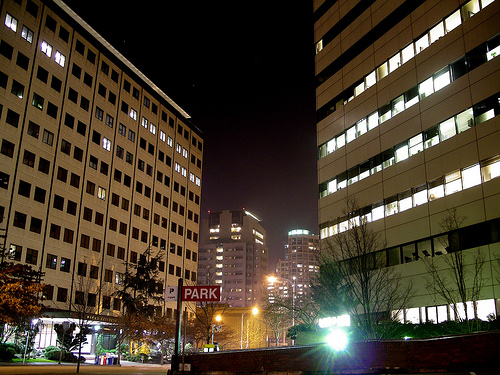JLL: Positive Signs Don’t Yet Equal Solid Recovery
The fourth quarter 2009 may have brought some positive indications for real estate recovery, but global real estate services firm Jones Lang LaSalle has one warning for wearers of rose-colored glasses: Not so fast.
February 11, 2010
By Allison Landa, News Editor
The fourth quarter 2009 may have brought some positive indications for real estate recovery, but global real estate services firm Jones Lang LaSalle has one warning for wearers of rose-colored glasses: Not so fast.
In its North America Office Report for the 2009’s fourth quarter, JLL cautioned that while positive signs in terms of increased demand and activity as well as a decline in sublease space have made themselves known, the industry isn’t exactly back in black.
“Fundamentals have a long way to shift to compensate for economic damage and job losses already realized,” the report reads. “We expect leasing activity levels to continue to rise and sublease space to continue to fall throughout 2010, however, enhanced space options will present tenants with continued leverage throughout the year in nearly every geography and asset class.”
JLL asserts that the recession has been replaced – not with triumph, but rather with a fragile, uneven recovery. The fragility will in part be underwritten by the fading of overwhelming support from government stimulus funds, as well as a continuously weak labor market and tight credit market, particularly when it comes to consumers and small businesses.
Jones Lang LaSalle managing director of Los Angeles brokerage Whitley Collins told CPE that recovery will continued to be hindered until consumers have cash in hand and the willingness to spend it.
“The economy’s got to start doing better,” he said. “People have got to get jobs, got to start having money to spend.”
In positive news, JLL reported that the U.S. economy ended a record-long streak of decline during the third quarter 2009, with GDP growing at an annualized rate of 2.2 percent according to the Bureau of Economic Analysis.
“The positive result likely provided a technical end to the worst recession in a half century,” the report reads.
However, technicality does not often translate to reality, and in this case life will not imitate data for some time to come. A troubled employment situation is a significant culprit for the lag, with payroll employment in the U.S. continuing to decline, albeit at a more stable level.
As for the national office market, JLL notes that corporate confidence has been stoked by the somewhat stabilizing employment market as well as by cost-cutting measures taken throughout 2008 and 2009. The report also claims these improvements have created “a potential psychological inflection point in the United States office market.”
Yet the gap between supply and demand remains wide. By the end of last year, occupancy levels and rents were continuing to drop while the total vacancy rate jumped to 18.3 percent from a previous high of 17.7 percent in 2003.
JLL expects leasing activity to pick up over the coming months as job losses begin to subside and transform into slow growth. The firm also expects further rent corrections in 2010; the average CBD asking rent fell 15.4 percent throughout 2009, with Manhattan, Boston, San Francisco, Charlotte, San Diego, Washington, D.C., and Seattle taking the worst of the beatings.
Despite cautions, the report ended with the assertion that things will indeed get better.
“Despite continued corrections in 2010, we believe that 2010 will be an ideal time for tenants to evaluate space options and explore the possibility of locking in long-term deals that take advantage of the current market discount,” it reads. “As the end of 2010 approaches, landlords will gradually begin to build confidence and stabilize rents before the market turns in favor of the landlords when real job gains continue at increased rates in mid-2011 and beyond.”








You must be logged in to post a comment.